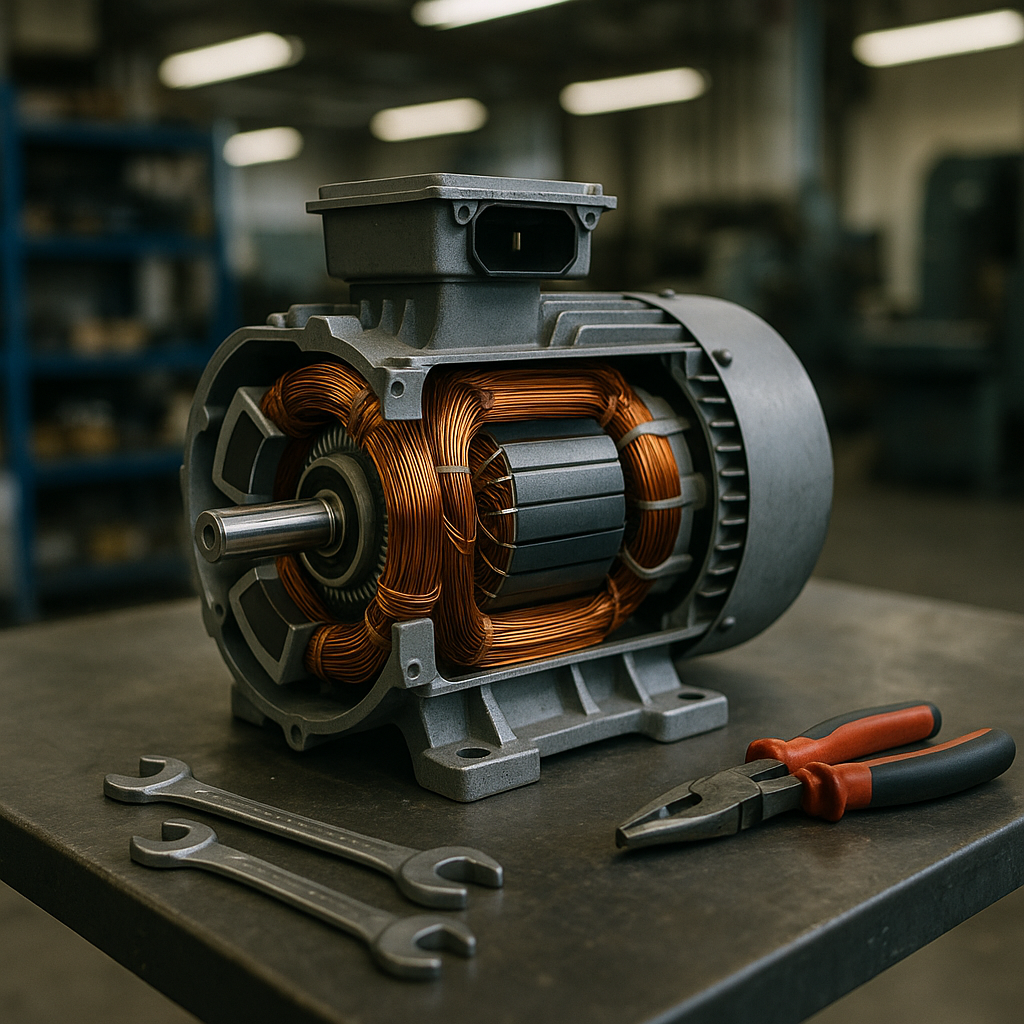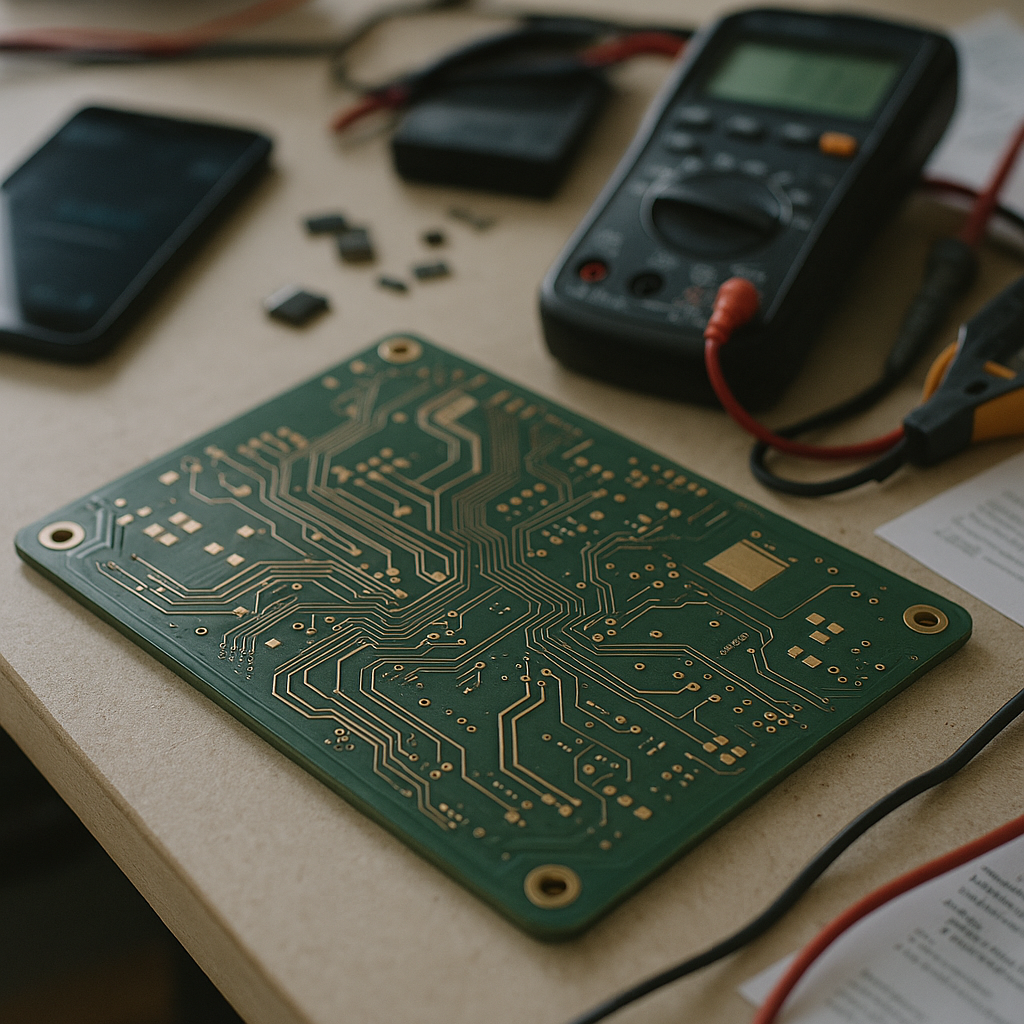5901 Botham Jean Blvd, Dallas, TX 75215
Is Copper Magnetic? Understanding the Basics
May 29, 2025No, copper is not magnetic. Unlike iron or nickel, copper does not attract to magnets as we typically think of magnetic materials. This distinctive property stems from copper’s classification as a diamagnetic material, meaning it experiences a weak repulsion when placed in a magnetic field.
This behavior originates at the atomic level. Copper atoms have a specific electron configuration where electrons are paired in their orbitals. For a material to display strong magnetic properties, it needs unpaired electrons that can align in a magnetic field. Copper’s atomic structure with its [Ar] 3d¹⁰ 4s¹ configuration means all its electrons are paired, leaving no unpaired electrons to create the magnetic moment necessary for ferromagnetism.
The diamagnetic property of copper manifests in subtle yet important ways. When exposed to an external magnetic field, copper generates a very weak opposing magnetic field. This reaction is quite different from materials like iron, which become strongly magnetized when near magnets. Understanding these fundamental properties helps explain copper’s extensive use in electrical applications where magnetic interference might be problematic.
Why Isn’t Copper Magnetic Like Iron or Nickel?

Copper’s non-magnetic nature stems from its unique electron arrangement. At the atomic level, copper has completely filled electron shells with paired electrons. This configuration is crucial for understanding why copper behaves differently than magnetic materials.
In ferromagnetic materials such as iron and nickel, unpaired electrons exist in their outer shells. These unpaired electrons act like tiny magnets that can align in the same direction. When many atoms have their electron spins aligned, they create a strong, unified magnetic field.
Copper, by contrast, has all its electrons paired. Each pair contains electrons spinning in opposite directions, effectively canceling out each other’s magnetic effects. Think of these paired electrons as dance partners spinning in opposite directions—their movements counterbalance each other, resulting in no net motion or, in copper’s case, no net magnetic field.
This electron configuration makes copper diamagnetic, meaning it creates a weak opposing field when exposed to external magnets. While iron and nickel can be easily magnetized and retain their magnetic properties, copper can never form a permanent magnet regardless of external conditions.
The distinction lies in the atomic structure. Iron atoms have four unpaired electrons that can align with external magnetic fields, while nickel has two unpaired electrons. These unpaired electrons make both metals responsive to magnetic forces. Copper’s fully paired electron configuration prevents such alignment.
When testing these materials with a magnet, the differences become obvious. A magnet strongly attracts iron and nickel because their unpaired electrons readily align with the magnetic field. Copper, however, shows no attraction, and in extremely strong magnetic fields, it might even show a slight repulsion.
This fundamental difference explains why copper can conduct electricity brilliantly but remains non-magnetic. Both properties stem from the same source: copper’s electron arrangement. The paired electrons that prevent magnetism allow electrons to move freely through the material, making copper an excellent electrical conductor.
Understanding copper’s non-magnetic nature helps explain its widespread use in electrical applications where magnetic interference would be problematic, such as in sensitive electronic devices and electrical transformers.
For industry professionals dealing with metal recycling and sorting, this property becomes especially valuable. Magnetic separation—a common technique for sorting ferrous metals—won’t affect copper. This necessitates different approaches for recovering and processing copper compared to magnetic metals like iron and steel.
How Does Copper Interact with Magnetic Fields?
While copper is not magnetic, it interacts with magnetic fields in interesting ways through electromagnetic induction. Copper is a diamagnetic material, meaning it doesn’t attract magnets like iron or nickel.
When a changing magnetic field passes near copper, it induces electric currents within the copper material. These induced currents are called eddy currents and flow in circular patterns on the copper’s surface, similar to swirling eddies in water.
According to Lenz’s Law, these eddy currents generate their own magnetic fields, actively opposing the original changing magnetic field that created them. This opposition creates a repulsive force between the copper and the moving magnet.
Demonstrating Electromagnetic Induction
A classic demonstration involves dropping a strong magnet through a copper tube. The falling magnet creates a changing magnetic field that induces eddy currents in the copper tube, which create opposing magnetic fields that resist the magnet’s motion.
As a result, the magnet falls much slower through the copper tube than it would through a plastic tube, appearing to float down through the copper tube rather than dropping quickly.
Real-World Applications
This interaction between copper and magnetic fields has several practical applications. In electromagnetic braking systems, copper components generate eddy currents that provide smooth, contactless braking for trains, roller coasters, and industrial equipment.
Induction heating uses this principle to heat copper and other conductive materials without direct contact. When copper is placed in a rapidly changing magnetic field, the induced eddy currents generate heat through electrical resistance.
Copper’s interaction with magnetic fields also makes it valuable in electrical generators and transformers. The changing magnetic fields induce currents in copper coils, efficiently converting mechanical energy to electrical energy.
Metal detectors exploit this property too, creating changing magnetic fields that induce eddy currents in metallic objects, including copper coins or wiring. The detector then senses the secondary magnetic field created by these eddy currents.
The strength of these eddy currents depends on several factors, including the rate of change of the magnetic field, the electrical conductivity of the copper, and the size and shape of the copper material.
Despite copper’s non-magnetic nature, its interaction with magnetic fields through electromagnetic induction makes it an essential material in many electrical and mechanical systems.
| Type of Magnetic Field | Copper’s Response |
|---|---|
| Static Magnetic Field | Passes through copper with little to no effect |
| Changing Magnetic Field | Induces eddy currents, creating opposing magnetic fields |
Can Copper Be Made Magnetic?

Pure copper cannot be made permanently magnetic due to its atomic structure. Copper atoms have paired electrons within their orbitals, preventing the formation of a magnetic moment needed for permanent magnetism.
Unlike ferromagnetic materials such as iron, nickel, and cobalt, copper lacks unpaired electrons that can align in a magnetic field. This makes copper diamagnetic, meaning it weakly repels external magnetic fields rather than being attracted to them.
Copper can exhibit magnetic-like behavior in two main ways, though neither results in permanent magnetism:
Copper Alloys with Magnetic Elements
When copper is alloyed with ferromagnetic elements like iron or nickel, the resulting material can display weak magnetic properties. The magnetic behavior comes from the ferromagnetic elements within the alloy, not the copper itself.
These copper alloys show varying degrees of magnetic susceptibility depending on their composition. For instance, some copper-nickel alloys may exhibit slight paramagnetic behavior, while copper-iron alloys might show localized regions with ferromagnetic properties.
The level of magnetism in these alloys depends greatly on:
- The concentration of magnetic elements
- The processing methods used
- The microstructure of the alloy
Even in these cases, the magnetic properties remain significantly weaker than those of pure ferromagnetic materials.
Electromagnetic Induction in Copper
The second way copper can interact with magnetism is through electromagnetic induction. When an electric current passes through copper, it generates a magnetic field around the conductor following Ampère’s Law.
This phenomenon is responsible for the functionality of:
- Electromagnets
- Electric motors
- Generators
- Transformers
Importantly, this magnetic field exists only while the current flows. When the current stops, the magnetic field disappears immediately. The strength of this field depends on the amount of current passing through the copper.
Another fascinating interaction occurs when a magnet moves near copper. The changing magnetic field induces eddy currents within the copper, which create their own magnetic field that opposes the motion. This principle is used in various applications including magnetic braking systems and induction heating.
This electromagnetic behavior is not due to copper becoming magnetic itself. Rather, it results from copper’s excellent electrical conductivity allowing the flow of electrons to create a temporary magnetic field.
Practical Applications of Copper’s Magnetic Behavior
Copper’s non-magnetic nature combined with its high conductivity makes it ideal for numerous applications:
In electrical wiring, copper’s diamagnetic properties ensure that it doesn’t interfere with nearby magnetic components. In transformers and motors, copper windings carry current to generate controllable magnetic fields without becoming permanently magnetized. This property is crucial in devices where magnetic fields need to be precisely controlled.
The unique relationship between copper and magnetism also enables technologies like magnetic resonance imaging (MRI) machines, where copper components help generate and control magnetic fields without disrupting them.
Understanding copper’s relationship with magnetism helps clarify why certain metals are chosen for specific applications in electrical and electronic engineering where magnetic properties must be carefully managed.
| Metal | Magnetic Type | Electron Configuration | Unpaired Electrons | Magnetic Moment |
|---|---|---|---|---|
| Copper | Diamagnetic | [Ar] 3d10 4s1 | 0 | Weak repulsion |
| Iron | Ferromagnetic | [Ar] 3d6 4s2 | 4 | Strong attraction |
| Nickel | Ferromagnetic | [Ar] 3d8 4s2 | 2 | Strong attraction |
Practical Applications of Copper’s Magnetic Properties

Copper stands out due to its diamagnetic nature, exhibiting a weak repulsion when exposed to magnetic fields. Combined with its exceptional electrical conductivity, copper is invaluable across various industries. Let’s explore how copper’s unique magnetic characteristics translate to practical applications.
Electrical Wiring and Power Distribution
Copper is the foundation of global electrical infrastructure. Its high conductivity—second only to silver—allows for efficient electricity transmission with minimal energy loss. Approximately 70% of copper produced worldwide goes into electrical wiring applications.
Copper’s diamagnetic properties help prevent unwanted magnetic interactions in densely packed electrical systems. This is particularly valuable in high-precision electronics where magnetic interference can disrupt signal integrity. Copper wire insulation ensures safety and prevents current leakage.
Power distribution networks rely on copper’s ability to handle high currents without significant resistance. From power plants to homes and businesses, copper wiring enables the reliable flow of electricity, making it the backbone of our modern electrical grid.
Motors and Generators
Electric motors depend heavily on copper windings to generate and direct magnetic fields. These motors contain substantial amounts of copper wire—ranging from a few pounds in small motors to hundreds of pounds in large industrial units. A 100 HP industrial motor typically contains 100-150 pounds of copper wire, precisely wound to optimize electromagnetic fields.
The amount of copper in motors directly correlates with their performance capabilities. Motors with higher horsepower require more copper to handle increased electrical loads while minimizing energy loss. This enables motors to deliver consistent torque and power output even under demanding conditions.
In generators, copper windings convert mechanical energy into electrical energy through electromagnetic induction. Copper’s non-magnetic properties help maintain stable, controlled magnetic fields, essential for efficient power conversion.
Transformers and Induction Systems
Transformers utilize copper windings wrapped around iron cores to transfer electrical energy between circuits. Copper’s conductivity allows transformers to operate efficiently, while its non-magnetic properties help control and direct magnetic flux within the transformer.
Inductive charging systems also benefit from copper’s unique properties. When alternating current flows through copper coils, it creates electromagnetic fields that can transfer energy without direct contact. This principle powers wireless charging pads for consumer electronics and larger applications like electric vehicle charging systems.
Copper’s excellent thermal conductivity offers an added advantage in these applications. It dissipates heat effectively, preventing overheating during extended operation of transformers and other high-current devices.
Electronic Equipment and Signal Integrity
In sensitive electronic equipment, copper’s non-magnetic nature minimizes interference with signal transmission. Circuit boards utilize copper traces to connect components while maintaining signal clarity. The diamagnetic properties help prevent unwanted field interactions that could otherwise cause data corruption or performance issues.
Telecommunications infrastructure relies heavily on copper cables for signal transmission. Despite advances in fiber optic technology, copper remains essential in many networks due to its reliability and electromagnetic properties. These properties help maintain signal integrity over long distances.
Consumer electronics contain extensive copper wiring that connects various components while ensuring minimal electromagnetic interference. From smartphones to kitchen appliances, copper enables the reliable operation of thousands of electronic devices we use daily.
Medical Equipment and MRI Technology
Medical diagnostic equipment, particularly Magnetic Resonance Imaging (MRI) machines, requires materials with minimal magnetic properties. Copper components are essential in these environments because they do not disrupt the powerful magnetic fields used for imaging.
MRI machines utilize copper in their gradient coils and RF shields. The copper must remain completely non-magnetic to prevent distortion of the imaging process. This application demonstrates how copper’s diamagnetic properties directly contribute to advanced medical diagnostics.
In other medical devices, copper provides reliable electrical conductivity without introducing magnetic interference that could affect sensitive measurements. This makes copper vital in equipment ranging from patient monitors to laboratory instruments.
Magnetic Shielding and EMI Protection
Copper’s interaction with magnetic fields makes it valuable for electromagnetic shielding applications. When properly designed, copper enclosures can redirect magnetic fields away from sensitive components. This shielding is crucial in environments with high electromagnetic activity.
Engineers use copper to create Faraday cages that block external electromagnetic interference. These protective enclosures ensure that sensitive equipment operates correctly even in challenging electromagnetic environments. Military communication systems and precision scientific instruments often rely on copper shielding.
| Application | Copper’s Role | Magnetic Interaction |
|---|---|---|
| Electrical Wiring | High conductivity, minimal interference | Diamagnetic, prevents unwanted interactions |
| Motors and Generators | Windings for electromagnetic fields | Creates controllable fields without permanent magnetism |
| Transformers | Efficient energy transfer | Non-magnetic, controls magnetic flux |
| Medical MRI | Components in imaging machines | Non-magnetic, prevents image distortion |
| Magnetic Shielding | Enclosures for sensitive equipment | Redirects magnetic fields |
Renewable Energy Systems
Wind turbines and solar power systems rely heavily on copper for efficient energy conversion. The non-magnetic properties of copper help manage the electromagnetic fields produced during power generation, resulting in more reliable and efficient renewable energy systems.
In wind turbines, copper windings in generators convert mechanical rotation into electrical power. Solar inverters use copper components to convert DC power from panels into AC power for the grid. The stability of copper’s magnetic properties ensures consistent performance across temperature variations.
As renewable energy adoption grows worldwide, the demand for copper in these applications continues to increase, making copper a critical material in the transition to sustainable energy systems.
Conclusion: Understanding Copper’s Role in Magnetism and Technology

Copper’s diamagnetic nature is fundamental to many technological innovations we rely on daily. This weak magnetic-repelling characteristic, due to copper’s paired electron configuration, makes it invaluable in applications requiring minimal magnetic interference. Its exceptional conductivity complements these properties, allowing copper to function effectively in electromagnetic induction without being attracted to magnets.
From MRI machines in hospitals to advanced magnetic braking systems in transportation, copper’s unique interaction with magnetic fields enables precise, reliable performance in critical systems. Whether in electromagnetic shielding, power generation, or sensitive electronic components, copper’s magnetic properties show that materials science extends far beyond basic classifications. For more information about recycling copper and other metals for your industrial or commercial needs, contact Okon Recycling at 214-717-4083.
